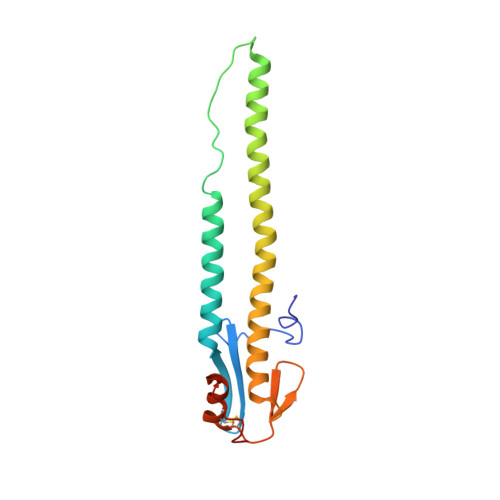Enhanced Human Receptor Binding by H5 Haemagglutinins.
Xiong, X., Xiao, H., Martin, S.R., Coombs, P.J., Liu, J., Collins, P.J., Vachieri, S.G., Walker, P.A., Lin, Y.P., Mccauley, J.W., Gamblin, S.J., Skehel, J.J.(2014) Virology 456: 179
- PubMed: 24889237
- DOI: https://doi.org/10.1016/j.virol.2014.03.008
- Primary Citation of Related Structures:
4CQP, 4CQQ, 4CQR, 4CQS, 4CQU, 4CQV, 4CQW, 4CQX, 4CQY, 4CQZ, 4CR0, 5AJM - PubMed Abstract:
Mutant H5N1 influenza viruses have been isolated from humans that have increased human receptor avidity. We have compared the receptor binding properties of these mutants with those of wild-type viruses, and determined the structures of their haemagglutinins in complex with receptor analogues. Mutants from Vietnam bind tighter to human receptor by acquiring basic residues near the receptor binding site. They bind more weakly to avian receptor because they lack specific interactions between Asn-186 and Gln-226. In contrast, a double mutant, ¦¤133/Ile155Thr, isolated in Egypt has greater avidity for human receptor while retaining wild-type avidity for avian receptor. Despite these increases in human receptor binding, none of the mutants prefers human receptor, unlike aerosol transmissible H5N1 viruses. Nevertheless, mutants with high avidity for both human and avian receptors may be intermediates in the evolution of H5N1 viruses that could infect both humans and poultry.
Organizational Affiliation:
MRC National Institute for Medical Research, The Ridgeway, Mill Hill, London NW7 1AA, UK.























